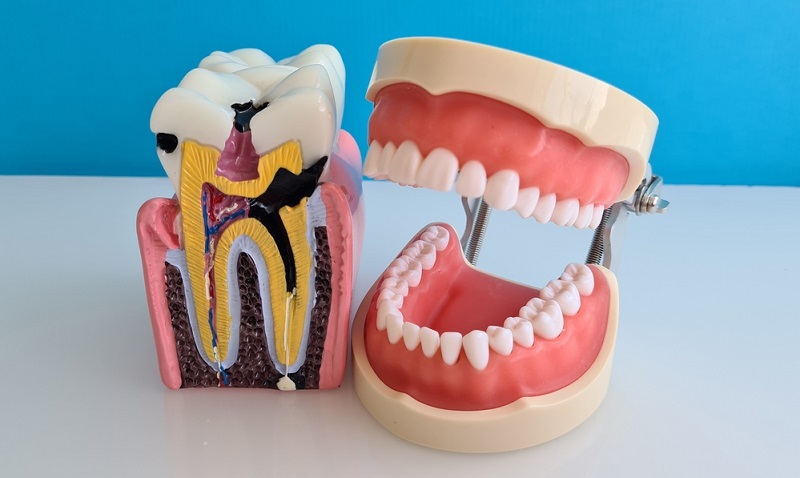Root canal treatment often evokes a sense of fear and anxiety among dental patients. Much of this apprehension is fueled by misconceptions and myths surrounding the procedure. In reality, root canal treatment is a routine, safe, and effective way to save a damaged tooth and relieve pain.
In this blog, we will debunk some of the most common myths about root canal treatment and provide you with the truth, helping you make informed decisions about your dental health.
Myth 1: Root Canal Treatment is Painful
The Truth: The belief that root canal treatment is excruciatingly painful is one of the most pervasive myths. This misconception likely stems from the pre-anesthetic era when dental procedures could indeed be uncomfortable.
However, modern dentistry has come a long way, and advancements in anaesthetics and techniques have made root canal treatment relatively painless. Most patients report that the discomfort during a root canal procedure is no worse than that of a routine filling. The treatment is designed to relieve the severe pain caused by an infected or inflamed tooth.
Myth 2: Root Canal Treatment Causes Illness
The Truth: Some myths suggest that root canal treatment can cause systemic illnesses or diseases. This belief originated from outdated and discredited research from the early 20th century. Contemporary scientific studies have shown no credible link between root canal treatment and systemic diseases.
Root canal treatment targets and removes the infection within the tooth, preventing it from spreading and promoting overall health. By preserving your natural tooth, root canal treatment helps maintain your oral health and prevents further complications.
Myth 3: Extraction is a Better Option Than Root Canal Treatment
The Truth: While tooth extraction may seem like a quicker and easier solution, it is not always the best option. Extracting a tooth can lead to other dental issues, such as misalignment, bone loss, and difficulties in chewing and speaking.
Replacing a missing tooth with a bridge, denture, or implant can be more costly and time-consuming than a root canal treatment. Preserving your natural tooth through a root canal not only maintains your smile but also ensures better long-term dental health and function.
Myth 4: Root Canal Treatment Requires Multiple Visits
The Truth: While some complex cases may require more than one visit, many root canal treatments can be completed in a single appointment. The number of visits needed depends on the severity of the infection and the condition of the tooth.
Advances in dental technology, such as digital imaging and rotary endodontics, have streamlined the procedure, making it faster and more efficient. Your dentist will assess your situation and provide a treatment plan that suits your needs.
Myth 5: A Root Canal Treated Tooth Will Eventually Need to Be Extracted
The Truth: With proper care and maintenance, a tooth that has undergone root canal treatment can last a lifetime. The key to the longevity of a root canal-treated tooth lies in good oral hygiene practices, regular dental check-ups, and timely restorations, such as crowns, to protect the tooth from future damage.
While no dental treatment can guarantee permanent results, root canal treatment has a high success rate and is reliable for saving natural teeth.
Myth 6: Root Canal Treatment is Only Necessary When You Have Severe Pain
The Truth: Pain is a common indicator of the need for root canal treatment, but it is not the only sign. Sometimes, a tooth may require a root canal even if it is not causing significant pain. Other symptoms include prolonged sensitivity to hot or cold, discolouration of the tooth, swelling and tenderness in nearby gums, and a persistent or recurring pimple on the gums.
Regular dental check-ups can help detect these issues early, preventing the need for more extensive and invasive treatments.
Myth 7: Root Canal Treatment is Expensive
The Truth: While the cost of root canal treatment can vary depending on the case's complexity and the tooth's location, it is generally a cost-effective solution compared to extraction and replacement options. Saving your natural tooth with a root canal can prevent the need for more expensive treatments, such as dental implants or dental bridges.
Many dental insurance plans cover a portion of the cost of root canal treatment, making it an affordable option for preserving your dental health.
Conclusion
Root canal treatment is a valuable and effective procedure for saving damaged teeth and maintaining oral health. By debunking these common myths, we hope to alleviate any fears or misconceptions you may have about the treatment. Modern dentistry has made root canal treatment a relatively painless and efficient process, offering a viable alternative to tooth extraction.
If you are experiencing symptoms that suggest you may need a root canal, consult with your dentist to discuss your options and ensure the best outcome for your dental health.
Remember, preserving your natural teeth through root canal treatment not only enhances your smile but also contributes to your overall well-being. Don’t let myths and misconceptions prevent you from seeking the dental care you need. Embrace the truth about root canal treatment and take a proactive step towards a healthier, happier smile.





Comments